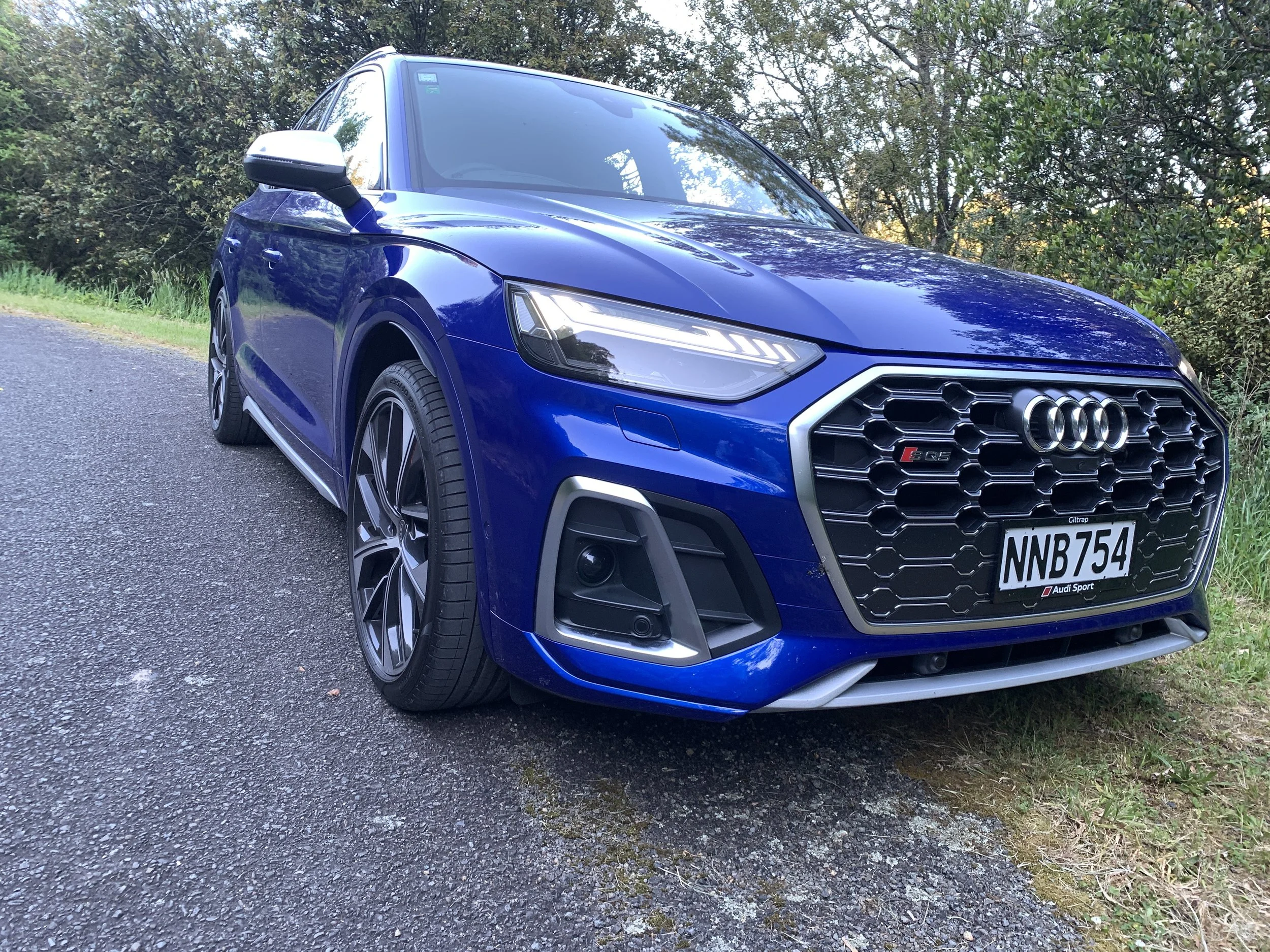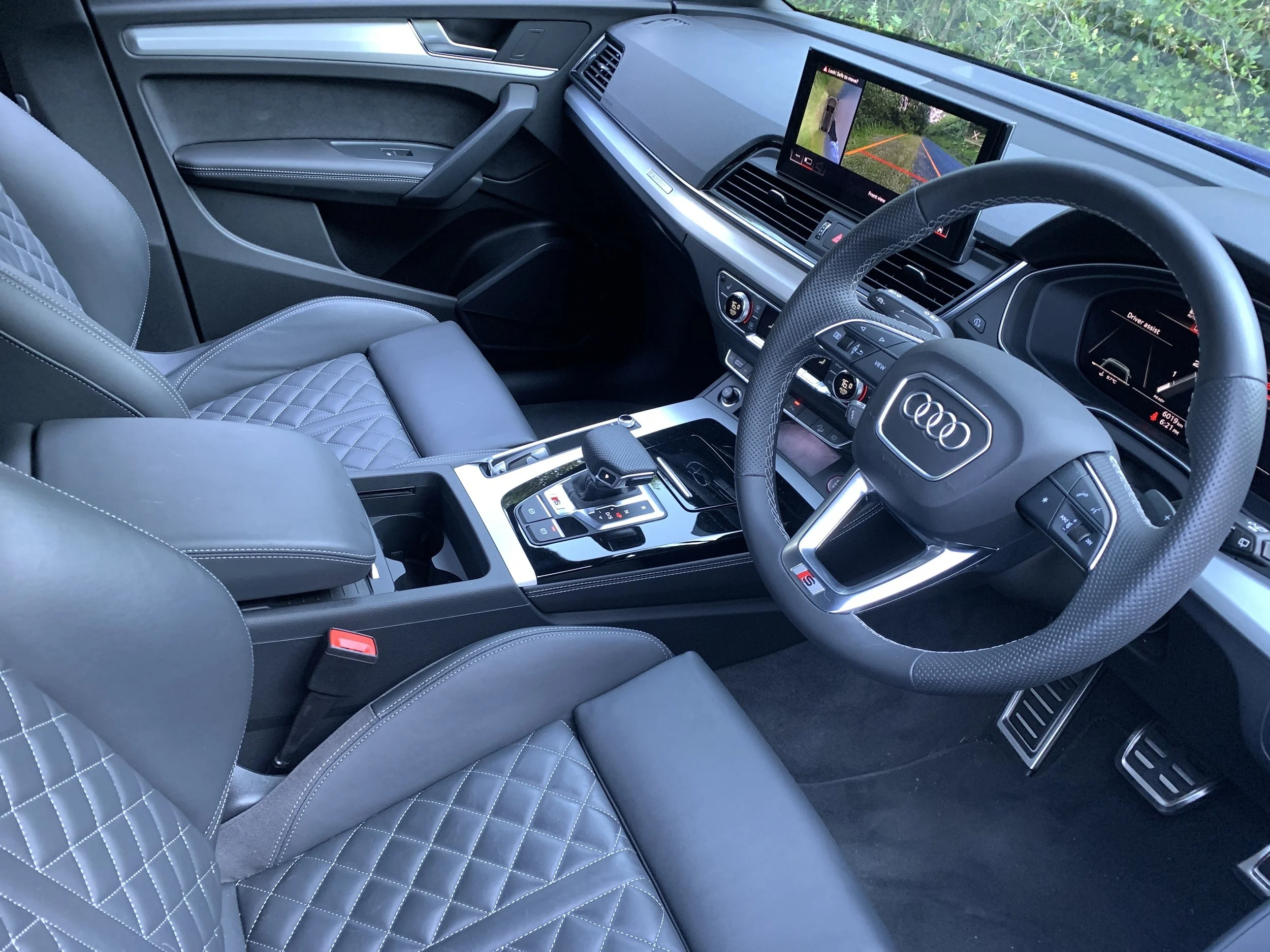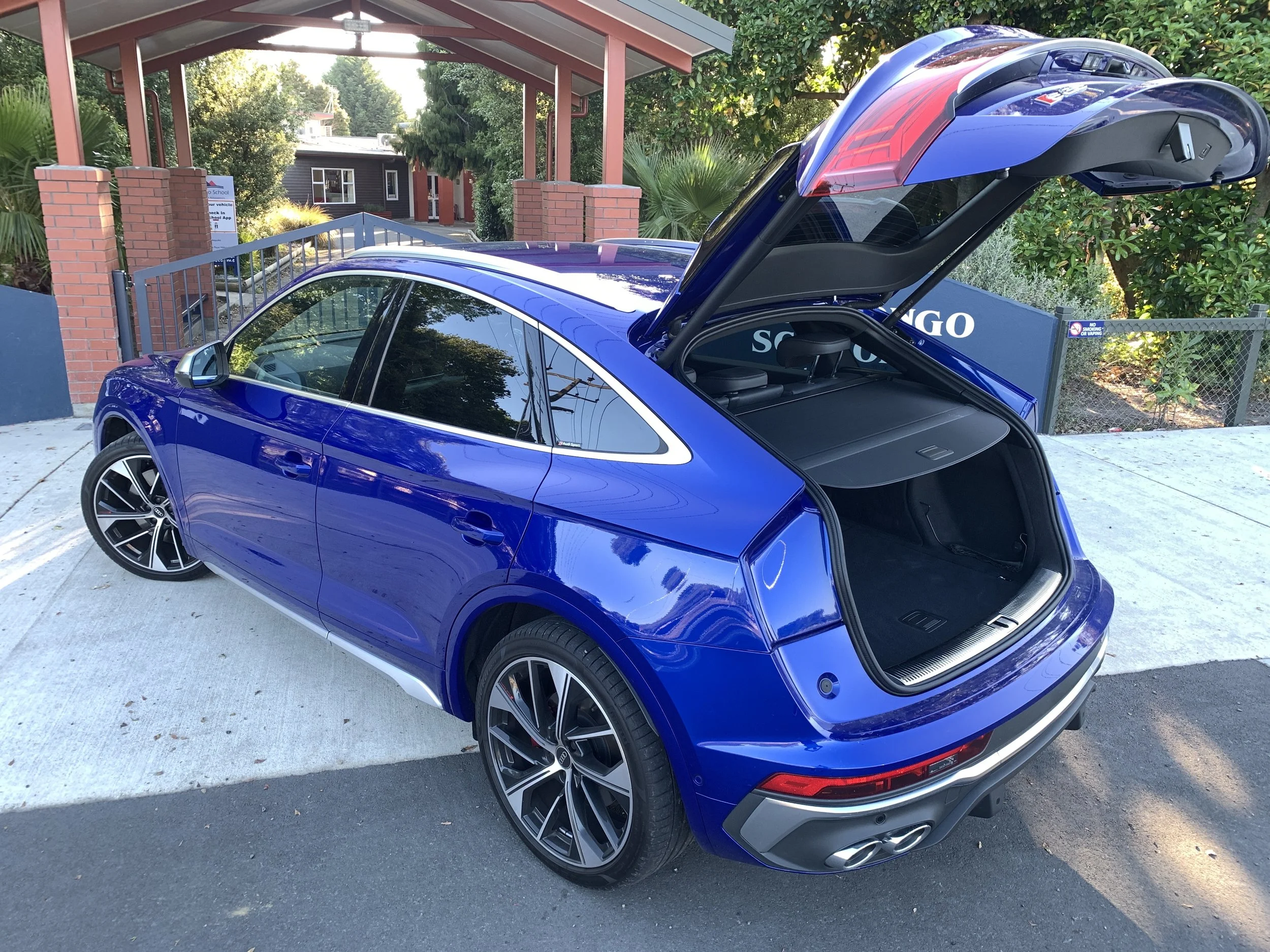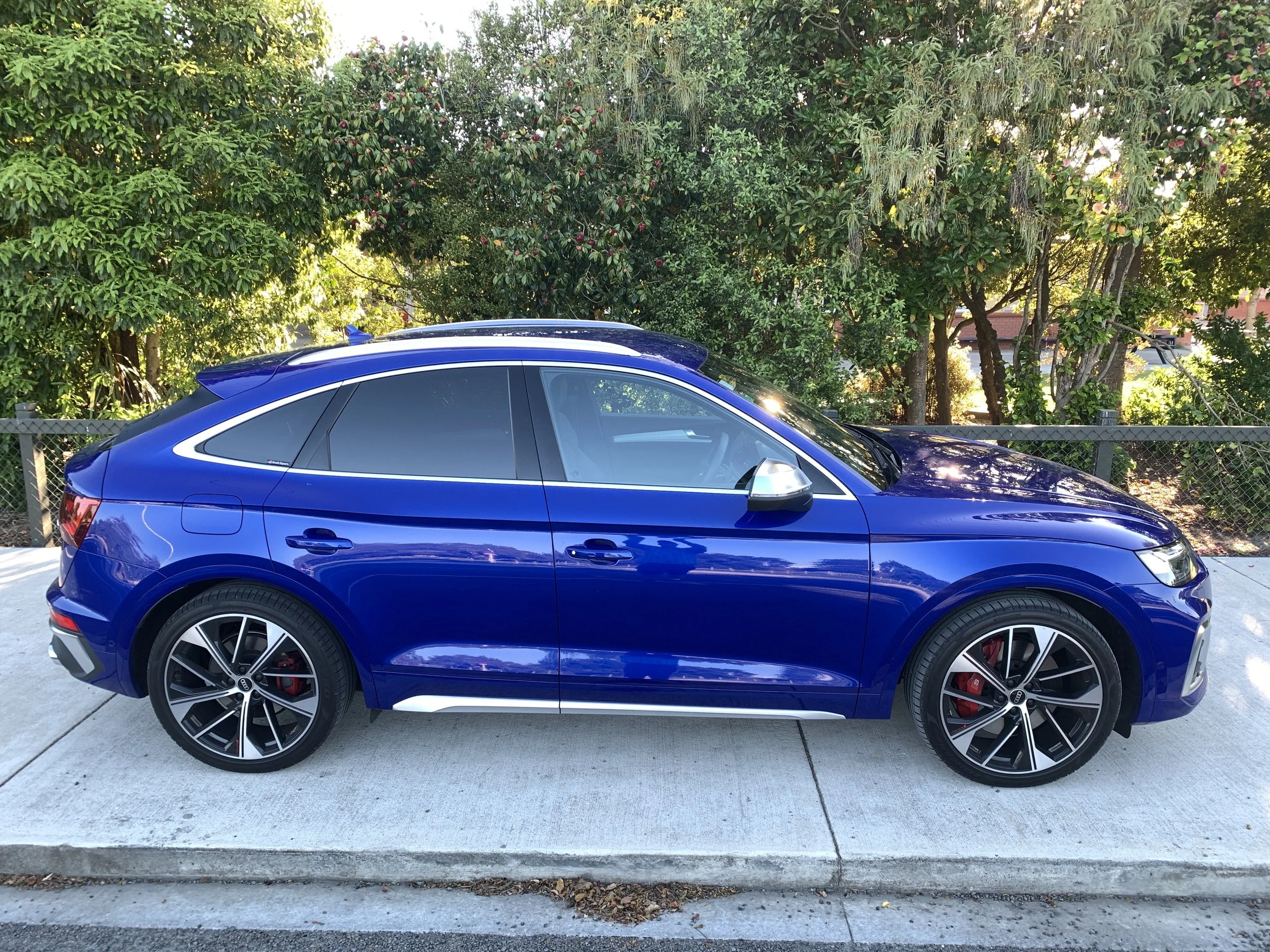Audi SQ5 review: You really shouldn’t, but …
/Diesel’s on a downer and, yet, this powerplant is just so uplifting and the package it comes with is decent, too.
Base price: $140,500
Powertrain and economy: 3.0-litre turbo V6 with 48-volt mild-hybrid system, 251kW/700Nm, 8-speed automatic, AWD, combined economy 7.0L/100km, CO2 182g/km.
Vital statistics: 4689mm long, 1893mm wide, 1633mm high, 2824mm wheelbase, luggage capacity 500 litres, 21-inch alloy wheels.
Like: Sportback styling and the engine; it's hardly in keeping with modernity to be praising a diesel, but it really is a good one.
Don't like: Interior improvements cannot disguise how fundamentals are showing age.
PERHAPS one day new vehicle brands heavily invested in transition to electric start might determine to split their sales outlets into two sections, in the same way video rental shops (kids, ask your grandparents) used to operate: Family-friendly fare up front and a tiny closed-off space in the back for the ‘dirty stuff’.
If that came to pass, then here’s a car that seems set to one day sit behind that door of shame.
Being on a platform unsuitable for a full battery-fed drivetrain transplant, Audi’s SQ5 Sportback is quite potentially one of the last brand-new ‘old school’ cars that Ingolstadt will put out.
Though a plug-in hybrid has been suggested for future delivery, the only nod toward battery-fed goodness is current form comes from it having a 48-volt system, and even that doesn’t really count as an environmental sop, as it is there to enhance the off-line oomph. Beyond that, it’s a car utterly uninvolved in the ‘alles-electrik’ push in which its maker is striving to demonstrate leadership.
Sorry, ‘utterly’? Surely that comment ignores a salient point, that being of it having resumed dedication to a fuel that gives best potential for decent running costs. Surely that must lend a Green credit? Hmmm. If only it were that clear-cut.
Technically, it should. There’s plenty to suggest this car having gone back to diesel power is good thinking. That’s how it formatted when it first came out, seven years ago, and sales boomed, for good reason. The SQ5 TDI then was not only the world’s fastest-accelerating production diesel SUV but also, through burning that fuel, among the least taxing on Big Oil.
It was a car that quickly convinced keen Kiwi drivers that an oil-burner could be exciting, so much so that the model’s switch to a V6 turbo-petrol engine in 2017 was almost an anti-climax. Yes, the petrol six sounded sweeter, but with so much less torque, it generated a lot less of the effortless shove that was a primary appeal.
With diesel back under the bonnet, it’s good news for those past fans. No argument from me. The 3.0-litre turbodiesel now in residence is even better than the original oil-burning offer. It has even more pull and even more refinement. In operational use it is generally sublime.
The cited economy being 0.2 litres worse than it used to is hardly a blemish; in fact, it’s pretty good, given this new model – through being physically larger, stronger in construction and toting considerably more kit - is 330kg heavier than the first.
The only real obstacle in its way is possibly public perception. Like it not, diesel’s social status has been somewhat blackened, sad to say, by the whole VW Group emissions-cheating saga and, more recently, ardent political moves to expunge it from the place it once enjoyed greatest support, Europe.
Because of this, some brands are hastening to pull their diesel models in this category; as things stand, the SQ5 TDi has fewer rivals now than it did a decade ago and, potentially, it might have fewer still by the time it reaches retirement, to be replaced by an e-tron of some kind. The deadline for that is 2030, but perhaps it could happen sooner. Everything depends on how strong the continuing buy-in is. So, basically, you might have to be a little thick-skinned to go this direction, now.
It's a pity, really, because speaking from ownership experience – not of one of these, but a distant relation, the more utilitarian Skoda Karoq - diesels are still so much better than the petrol-electrics that are starting to bump them aside, not just for performance and utility (look at the towing ratings) but even for economy. That battery-involved fare only looks smart when the electrics are doing just that; ‘involving’. (Once the zap erodes beyond point of usefulness, you’re just using a generally small-capacity engine to haul a significantly heavy redundant battery).
Sure, emissions are a different story. PHEVs are simply cleaner. Yet modern passenger car diesels don’t deserve the emergent approbation traydeck diesels are copping. It’s called a ute tax for a reason. The Audi’s outputs are below the 192 grams per kilometre cut-off that impacts from April 1.
Nonetheless, the times and our tastes are changing; if your taste is for this kind of engine, then at least you can be satisfied that it presents well behind the four-circle badge. As does the package that contains it.
Sportback or conventional shape? With just $2800 as a premium for the first, there’s surely no argument about that one? The original look Q5 has done a fair job of selling itself, to the point of having become something of a ubiquity in the more upscale parts of most towns, but it’s no longer as fresh-looking as it once was and arrival of the slinkier-roofed rendition just enforces that impression.
This is the third Audi SUV to receive a coupe-style look, following the Q3 and the e-tron, and it looks hot and engaging different, as styling cues don’t wholly tie to the ‘other’ shape. The Sportback gains a new honeycomb grille reminiscent of Audi’s RS cars, plus new air intakes at the front and Sportback-specific wheels. Patently, the shoulder line from the B-pillar onwards is all new. The tail-lights are OLED.
The Sportback adds 7mm to the length of the Q5 SUV, but the overall height and width are common. Coupes often squander space for the sake of style, and that’s a little bit evident in the rear part of the passenger cabin, but the boot remains as practical as the other car’s, with seats up capacity dropping by a paltry 10 litres, with improvement to 1480L with the rear seats folded. It’s not the most practical SUV on sale, but it certainly doesn’t disgrace itself.
The interior itself is properly outfitted; everything’s beautifully-constructed and there’s an ambient light package to rev things up. Of more personal interest is that the 10.3-inch infotainment system features a new split-screen capability and a reworked version of the menu that’s been available on the old shape car, so the old rotary MMI controller has gone and most functions operate by touching the screen instead. Most but not all; Audi's engineers still see sense in having proper physical buttons and rotary controllers for the heating, ventilation and climate control.
It’s a welcome functionality but potentially not quite enough. While the new operability will detract you from thinking about how Audi’s screen graphics are looking a bit dated, owners might be irked the car cannot drop its protruding touchscreen and older operating system for the fancier embedded haptic set-up seen in the e-tron and biggest Q models.
The big centre screen is joined by a very impressive digital dashboard that replaces traditional analogue instruments and a head-up display.
Down on the centre console, there's a stubby, flat-topped selector for the S tronic dual-clutch automatic gearbox, which is joined by switches for the electronic parking brake, a physical volume controller for the radio and three small storage areas, one of them lidded. Behind the gear selector, and under an adjustable armrest, there's a larger storage area that also houses the Q5's cupholders - which is not a great arrangement. Anything tall in one of them gets in the way of your elbow when you're selecting Drive.
The SQ5 comes with sports suspension springs with adaptive dampers and it’s not bad, with caveat that – because Germans tend to expect ordinary road surfaces to be billiard table smooth (which is often the case in Europe, but much less so here), you have to expect even the most compliant setting, Comfort, to be firm and everything above that to be even less yielding. That’s the case here but since it does strive to offer a sporty driving feel, it’s probably going to be excused for failing to emulate a limo.
There is good trade-off in the dynamics, not least when scooting around corners, where it maintains a nice stability. When push comes to real shove, probably a sedan or sedan-based wagon would be better, because they’re lower, but all in all it’s pretty decent, changing direction superbly well and, of course, delivering heaps of traction and grip, thanks to the all-wheel-drive being always involved.
Those expecting the S in the car’s name to deliver sportiness will not be disappointed, then, though they also need understand that this but a halfway point to the real deal; those RS products are all the more agile, alert and keen still. It’s interesting Audi doesn’t do one of those in the Q5 range, given the Porsche Macan gives a great insight to the potentials of just such a car. Maybe that’s the issue. The SQ5 is more reserved and neutral and the steering lacks sufficient weight and feedback, even with the car set to Dynamic mode.
As bad as that engine will seem … well, it’s still really good. The torque hit is simply impressive and, because the peak whumps in at just 1750rpm, is very accessible. The job of the 48-volt system is to basically act as an additional electric “turbo”, adding instant electric grunt form a standstill until the turbo spools up. A small and extravagant enhancement, perhaps, but one that definitely appeals, given how instantaneous and smooth the acceleration is.
The eight-speed automatic transmission is nicely in tune; too; there’s no drivetrain thump when you give it a big bootful.
A performance exhaust is par for the course and a fair degree of meddling is involved, not just with electronic enhancement. Those who poke around under the back end will see two of the four pipes are fakes. For all that, though, it has a strident and amenably brassy note, with the right kind of rumble idle building to a decently strident note in drive-by.
That soundtrack, on top of the head-turning looks, makes you wonder if Audi is almost out to goad. It’s as though there’s intent here to remind that, regardless that it has committed to an electric future and already has cars that can take you there, it has others that won’t be part of that mission yet are still so enticing as to make consumers hesitate about needing to pure battery driving quite just yet.
On that note, the SQ5 does run it rather fine, in that you can slip into an e-tron wagon for not a lot more. Going that way means having to accept a bigger, heavier and less involving car; but it also future-proofs in a way the diesel model clearly doesn’t. I can’t image that the Q4 e-tron is going to make its life any easier, when it arrives.
If you do want to keep driving with fossil fuels, then some brands will offer cars that give the same or more with petrol engines; not just immediate rivals in the premium sector like BMW, Mercedes and Jaguar (which now does an F-Pace with a plug-in hybrid).
On day of return, the SQ5 was swapped for a Cupra Formentor; not quite the same thing in terms of pedigree, of course, and showing that in a slower lower level of polish in its presentation. Plus, of course, a Cupra is quite different in mechanical make-up – being petrol, front-drive.
And yet, for sheer vibrancy and vivaciousness, I’d have to say I’d probably be happier with the Spanish flier at literally half the price.
Still, if you’re intent on taking one last run with a premium diesel in this category, it’s hard to immediately nominate a better one.
























